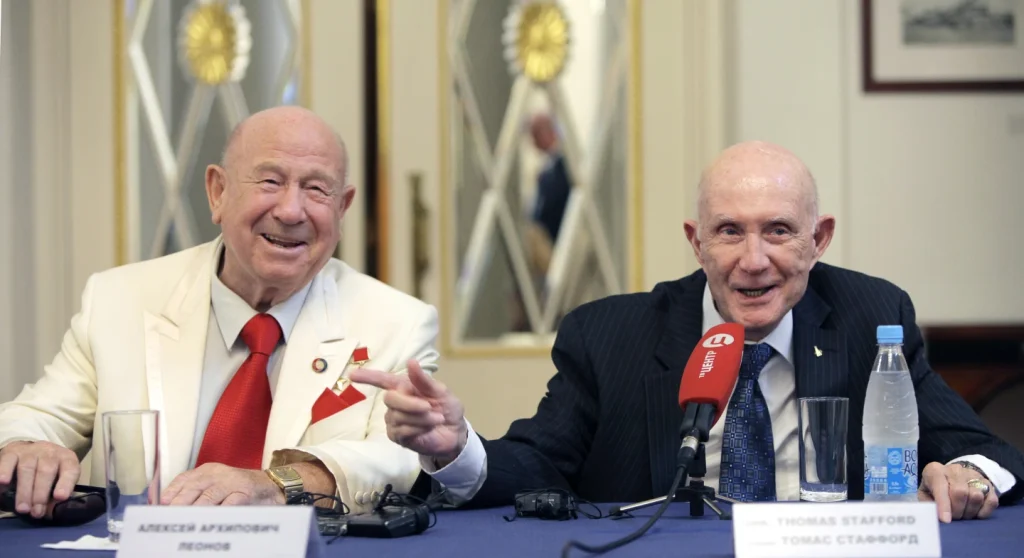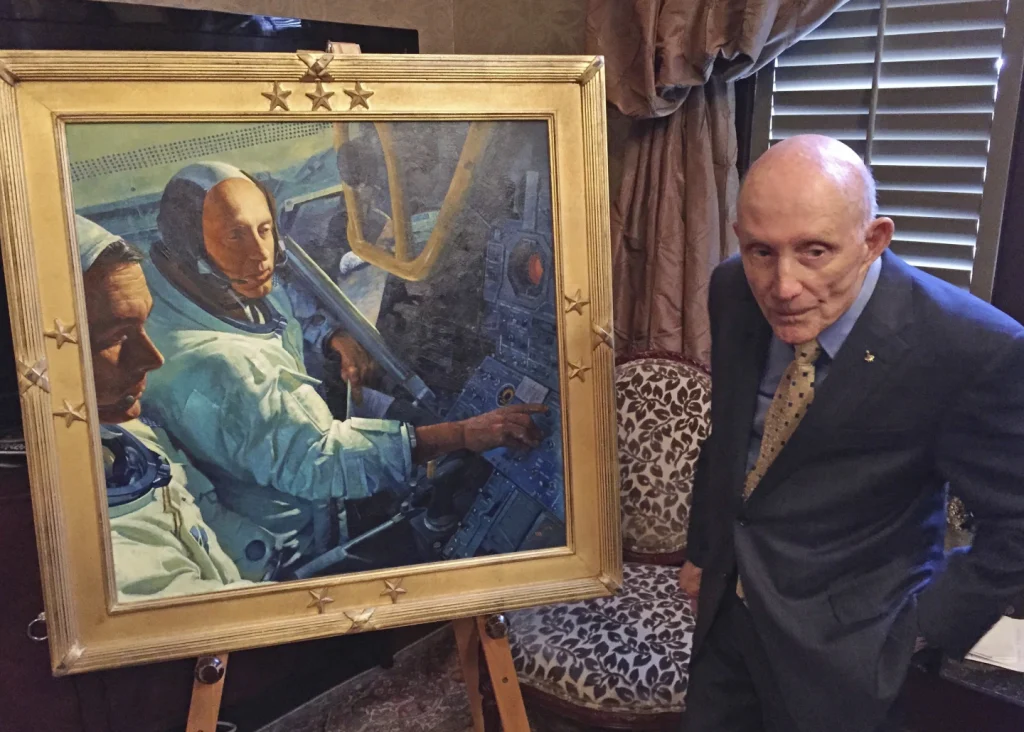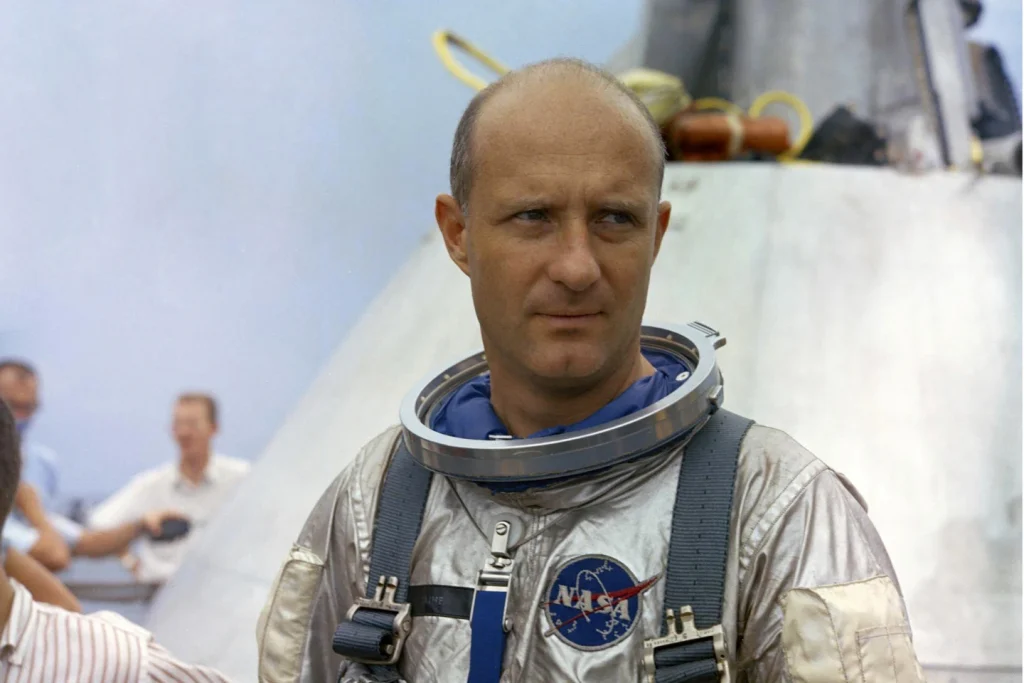The recent passing of Astronaut Thomas P. Stafford marks the end of an era in space exploration. A distinguished veteran of the United States Air Force and a revered figure in the field of astronautics, Stafford’s contributions to humanity’s quest for the stars are indelible and profound.
His legacy, spanning a lifetime of achievements and milestones, serves as a testament to the unwavering spirit of exploration and discovery that defines the human experience.
Born into a world on the brink of venturing beyond the confines of Earth, Stafford’s destiny was intertwined with the nascent ambitions of a nation eager to conquer the final frontier.
From his early days as a test pilot to his illustrious career as an astronaut, Stafford embodied the courage, skill, and determination that are the hallmarks of those who dare to reach for the stars.
Stafford’s journey to the heavens began with his participation in the Gemini program, where he honed his skills in orbital rendezvous and spaceflight maneuvers.
His pivotal role in the first-ever rendezvous of two U.S. capsules in orbit showcased his exceptional piloting abilities and laid the groundwork for the groundbreaking missions that would follow.
However, it was Stafford’s command of the Apollo 10 mission that solidified his place in history. As the commander of the dress rehearsal flight for the 1969 moon landing, Stafford led his crew on a daring voyage to the lunar vicinity, bringing them within a mere 9 miles of the moon’s surface.
This mission, which set the stage for the historic Apollo 11 landing just two months later, showcased Stafford’s leadership, expertise, and unwavering dedication to the pursuit of excellence.
Beyond his exploits in space, Stafford’s contributions to the field of aerospace technology were equally significant.
As the “Father of Stealth,” he played a pivotal role in the development of cutting-edge technologies that would revolutionize modern warfare and defense systems.
His leadership at the famed “Area 51” desert base, shrouded in secrecy and intrigue, underscored his commitment to pushing the boundaries of what was possible and exploring the unknown.
In the twilight of his career, Stafford continued to serve as a guiding light for NASA, offering sage advice and counsel on a myriad of issues, from human Mars missions to spacecraft safety.
His chairmanship of oversight groups and his efforts to rectify the flaws in the Hubble Space Telescope exemplified his unwavering commitment to advancing the frontiers of science and technology.
As we bid farewell to a true pioneer and visionary, we are reminded of the profound impact that one individual can have on the course of history.
General Tom Stafford’s legacy will endure as a beacon of inspiration for future generations of explorers, dreamers, and innovators.
May his spirit of adventure and discovery continue to ignite the flames of curiosity and ambition in all who follow in his footsteps.

In the vast expanse of the cosmos, where celestial bodies dance in an intricate ballet of gravity and light, lies a perspective that forever alters one’s perception—the view of Earth from the depths of space.
Thomas Stafford, a pioneer of space exploration, vividly articulated the profound impact of this sight, emphasizing how it transforms one’s understanding of existence.
Reflecting on his experience in lunar orbit, Stafford reminisced about the awe-inspiring moment when Earth first came into view, a mesmerizing spectacle that transcends earthly boundaries.
The transition to the moon’s far side presented Stafford with a stark contrast—the sudden disappearance of Earth, leaving behind a void of profound darkness.
Such moments of solitude amidst the cosmic vastness evoke a sense of insignificance and humility, prompting contemplation of humanity’s place in the universe.
Stafford’s journey continued with Apollo 10, a mission that set a remarkable record for the fastest speed achieved by a crewed vehicle upon its return to Earth.
This feat symbolized humanity’s relentless pursuit of exploration and discovery, pushing the boundaries of what was once deemed impossible.
Following the culmination of moon landings, a historic collaboration between NASA and the Soviet Union unfolded, culminating in a joint docking mission led by Stafford.
This endeavor required intensive language training, navigating complex political landscapes, and fostering enduring friendships with cosmonauts.
The convergence of American and Soviet space travelers symbolized a beacon of hope for global cooperation, transcending ideological differences in pursuit of a shared vision.
The iconic moment of rendezvous between the Apollo and Soyuz spacecraft, underscored by Stafford’s radioed message in Russian and his counterpart’s response in English, epitomized the spirit of unity and camaraderie that transcends linguistic barriers.
The subsequent days spent conducting experiments and embarking on a global tour together showcased the power of collaboration in fostering mutual understanding and goodwill.
Stafford’s legacy extends beyond his pioneering space missions, encompassing his pivotal role in integrating Russia into the International Space Station partnership during the 1990s.
His visionary leadership and unwavering commitment to fostering international cooperation have left an indelible mark on the trajectory of space exploration.

Hailing from Weatherford, Oklahoma, Stafford’s childhood dream of flight was ignited by the sight of DC-3 airplanes soaring overhead, instilling in him a passion for aviation that would shape his destiny.
His journey from the U.S. Naval Academy to becoming a distinguished astronaut exemplifies a relentless pursuit of excellence and a steadfast dedication to pushing the boundaries of human achievement.
Stafford’s illustrious career, marked by numerous spaceflights and accolades, serves as a testament to the indomitable spirit of exploration that propels humanity towards the stars.
His unwavering commitment to advancing the frontiers of space exploration, coupled with his enduring legacy of fostering international collaboration, cements his status as a trailblazer in the annals of space history.
As we gaze upon the night sky and ponder the mysteries of the cosmos, let us remember the pioneering spirit of individuals like Thomas Stafford, whose vision and courage have propelled humanity towards new horizons of discovery and understanding.
In the vast tapestry of the universe, his legacy shines as a guiding light, inspiring future generations to reach for the stars and embrace the infinite possibilities that lie beyond.
